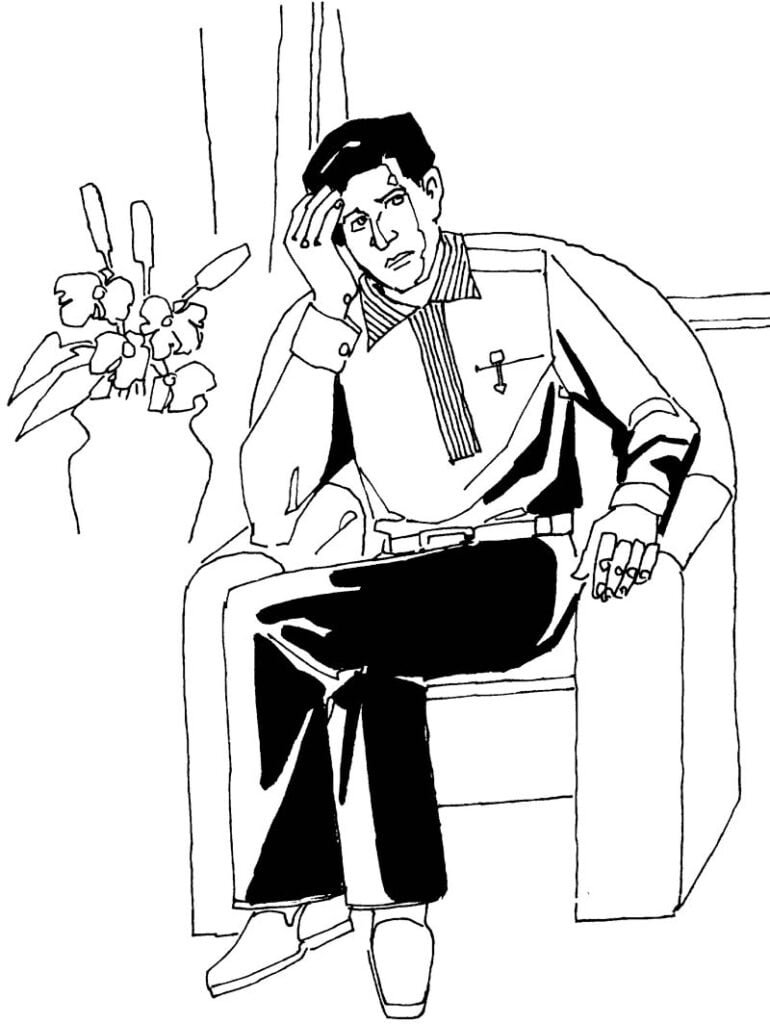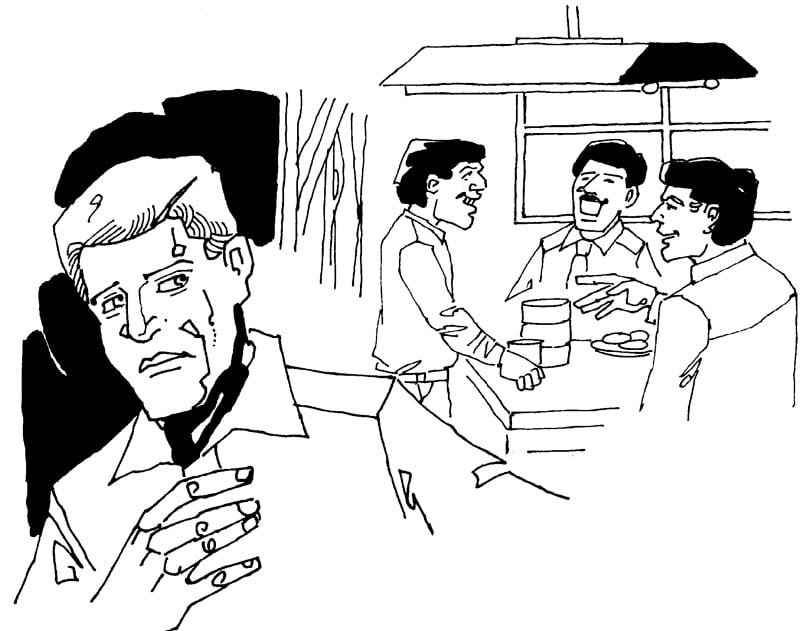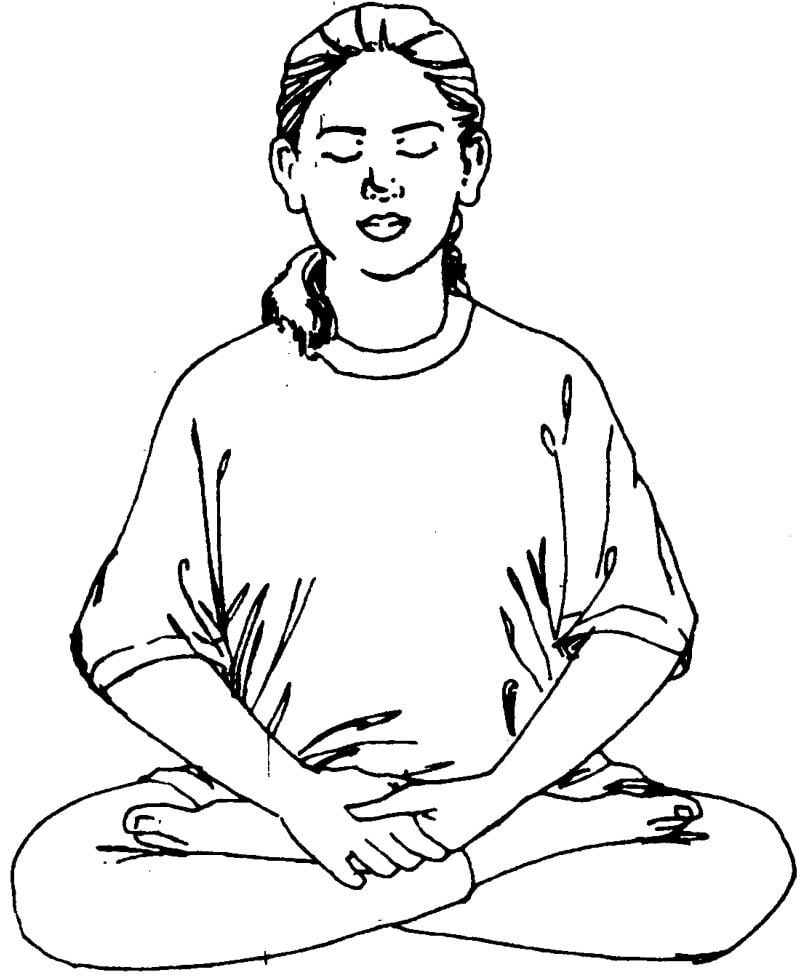In the United States, an estimated five percent of the total population suffer from anxiety. Anxiety is more common among women than men. Some studies have indicated that anxiety may also run in families. It is increasing in India also.

It is believed that the number of people suffering form anxiety is increasing at an alarming rate due to pressures of modern life. However, some specialists feel that there is no conclusive evidence to prove that anxiety is on the increase. According to them, increased awareness and the desire to live life fully have resulted in more number of people seeking help for anxiety.
Irrespective of whether anxiety is on the increase or not, it is important that you learn to deal with anxiety in order to lead a more productive and meaningful life. Controlling and preventing anxiety will also enhance your coping skills in case of adversity. Anxiety is often confused with fear.
What are the effects of anxiety ?
Anxiety affects everyone, especially when there is excessive mental or emotional stress. It normally leads to two outcomes: (a) intense panic and therefore inability to function normally or adapt to the situations or (b) an ability to anticipate the danger and take appropriate preventive measures against it. The first reaction is called ‘traumatic anxiety’ and the second reaction is called ‘signal anxiety.’
What are the causes of anxiety ?
All the memories suppressed during the infancy and childhood can have an impact on the adult life and result in anxiety. It is usually the result of an exaggerated response to an emotional stress. Emotional ups and downs are a part of everyone’s life. However, some people are more adversely affected by emotional stress than others.
Anxiety often develops over a long period of time and is largely dependent on the entire life’s experiences. Specific events or situations can precipitate anxiety attacks but only after a basic pattern of an anxious response to life’s experiences is established. There are four main factors that influence development of the pattern of anxious response:
Surrounding : The environment or surrounding in which you live influence the way you think about yourself and others. It could be due to your experiences with family, friends, colleagues, etc. Anxiety is common if you are insecure about your surrounding.
Suppressed emotions : Anxiety can occur if you are unable to find an outlet for your feeling in personal relationships. This is especially true if you suppress anger or frustration for a very long time.
Physical causes: The mind and body are constantly interacting with each other and any change in this interaction may cause anxiety. This is commonly seen in conditions such as pregnancy, adolescence and recovering from an illness. During these conditions, mood changes are common and they may lead to anxiety.
Hereditary: Although some emotional disorders may run in families, it is not an important cause of anxiety.
What are the types of anxiety ?
Conditions that cause anxiety are broadly divided into three categories: (a) anxiety states, (b) phobic disorders and (c) post-traumatic stress disorders. The category of anxiety states includes three specific disorders: (1) Panic disorder, (2) Generalised anxiety disorder and (3) Obsessive compulsive disorder.
Anxiety States
Anxiety may either be acute (of short duration) or chronic (of longer duration). It is common for a person with panic disorder to have symptoms of generalized anxiety disorder. Anxiety with out panic attacks is called generalized anxiety disorder. Both panic disorders and generalised disorders have similar causes, signs and symptoms.
What are panic disorders ?
Recurrent attacks of anxiety or panic along with nervousness are called panic disorders. They are often associated with a feeling of approaching doom. Panic disorders may either begin slowly with a general feeling of tension and nervous discomfort or occur suddenly with an attack of acute anxiety. Although panic disorders are more common in young adults, they may also be present in adolescents.

Panic disorders are usually not related to other mental illnesses and often appear to occur without any precipitating factors. Precipitating factors are those factors of panic attacks, especially if you have suppressed emotions, which a mental health specialist can help you identify.
What are the symptoms of panic Disorders ?
Common symptoms of panic disorders include a feeling of panic, palpitations (thumbing sensation and awareness of the heart beats), pain in the chest, difficulty in, or rapid breathing and a feeling of dizziness and weakness. Most people describe panic as a strange, weird or ghostly feeling as if something very bad is going to happen. It is important to remember that you may not always be able to identify the cause of fear and nervousness or the consequences of the event you dread. If you are unable to identify the cause, you are likely to become more desperate and feel that you should do ‘something’ to protect yourself. It may however be difficult to define what this ‘something’ is.
Detailed below are the main symptoms of panic disorders :
Chest pain : Chest pain due to anxiety is often confused with chest pain due to heart attack or angina.
There are four major differences between chest pain due to heart problems and anxiety. The chest pain due to anxiety:
Lasts only for a few seconds at a time but may repeat every few minutes or hours.
Is not related to exercise or physical exertion.
Can occur even at rest.
Does not go away when you stop the physical activity you may be doing when the chest pain starts.
Difficulty in breathing: During an attack of panic, you may begin to breathe more rapidly and more deeply because of the fear that you are inhaling less air. You may also have a strong urge to go out and inhale more air. If the rapid and deep breathing continues for a long time, there may be loss of large amount of carbon dioxide. This imbalance in carbon dioxide in the body is likely to produce additional symptoms such as numbness or tingling in the toes, feet or face, light-headedness and giddiness.
Other symptoms : Some people with anxiety may complain of sensation, goose pimples and trembling. In addition, there may be pain or hollow butterfly like fluttering feeling in the stomach. During a panic attack, you may be unable to act or think intelligently and as a result feel as if your mind is clouded or confused.
Diagnostic criteria for panic disorders
At least three panic attacks should not be in situations that are related to excessive physical exertio or life-threatening situations.
Fear and apprehension is present in each panic attack along with at least four of the following symptoms:
- Difficulty in breathing
- Awareness of, or forceful heartbeats
- Chest pain or discomfort
- Choking or suffocating sensation
- Giddiness or Unsteady feeling
- Tingling in the hands and feet
- Feeling of unreality
- Hot and cold flashes
- Sweating
- Faintness
- Trembling or shaking
- Fear of dying, going crazy or mad or doing something uncontrollable during the panic attack.
At least one attack would have been followed by at least one month of one or more of the following:
Continuous concern about having another attacks.
Significant worry about the likely outcome or consequences of the panic attacks, such as having a heart attack or going crazy.
A major change in behaviour related to the attacks.
No associated physical problems or other mental illnesses such as major depression.
The frequency of panic attacks varies from person to person. Some people may have only a few attacks during the entire life while others may have attacks every few days, weeks or months. Sometimes the panic attacks may stop suddenly without any apparent reason. The severity and duration of symptoms varies with each attack.
What is generalised anxiety disorder?
Generalised anxiety disorder is a condition where there is chronic and exaggerated worry or tension often without any provocative factors. Most people with this condition live with fear of disaster and worry about most aspects of life such as health, money, family, work etc. There may be periodic or recurrent acute attacks of panic with more severe symptoms.
Just as in panic disorder, it may not be easy for you to identify the exact cause of generalised anxiety. Even if you do, it is likely that you may not be aware of how and why these troubles cause the symptoms.
There are several symptoms of chronic anxiety. Of these, the most common are:
General irritability : Nervousness, irritability, tense and panicky feeling. A chronic worry that an unknown calamity will soon strike leads to sleepless and easy tiredness during the day.
Headache: Muscle tension, especially in the head, neck and back, may lead to headache or a dull and throbbing discomfort. The pain may be present either at the back, top or front of the head.
Tremors: Shakiness and trembling of the whole body, especially in the arms and hands.
Increased activity of the autonomic system : Involuntary functions of the body such as breathing, digestion, heart beats, etc. are called ‘atomic functions’ as they function independently without outside influence. Anxiety can increase the activity of the autonomic system and, therefore lend to increased sweating (especially on the palms of the hand), and flushing of the face. Sometimes there may either be increased dryness or watering in the mouth.
Increased autonomic activity also leads to disturbances in the digestive system. ‘Butterflies in the stomach’ is a very common feeling. Other symptoms include burning sensation in the chest or stomach, which often accompanied by belching, bowel disturbances (especially loose bowels) and increased frequency of passing the urine.
It is important to remember that the progress recovery of generalised anxiety disorder varies from person to person. Some people may recover with short-term treatment, while others may continue to have symptoms and inability to lead a normal life with varying degrees of severity. Chronic anxiety in young adults often tends to become less severe with age, especially if there is success and stability in professional and personal lives.
Diagnostic criteria for generalised anxiety disorder
Severe and continuous anxiety that has at least three of the following four categories of symptoms:
Nervous tension
Trembling, shakiness, tension, pain in the muscles, tiredness, inability to relax, twitching of the eyebrows, frowning, strained face, restlessness and restless movements.
General symptoms
Sweating, increased heart rate and palpations, cold and clammy hands, dry mouth, dizziness, tingling in the hands and feet, increased frequency of passing urine, indigestions, diarrhoea, discomfort in the middle of the stomach, lump in the throat and rapid breathing.
Apprehensive expectations
Anxiety, worry, fear, absent-mindedness and anticipation of harm.
Attention
Increased attentiveness that results in distraction, difficulty in concentration, lack of sleep, irritability, impatience and feeling fidgety.
Continuous anxious mood for more or at least one month.
No other associated mental disorders such as depression etc.
Age eighteen years or above.
How are anxiety states diagnosed ?
As mentioned earlier, anxiety can also be one of the major symptoms of other psychiatric illnesses. Your doctor will ask several questions to rule out associated disorders.
It is difficult to diagnose anxiety states by physical examination alone. This is because anxiety is normally not associated with abnormalities in any organs or parts of the body, Also, as mentioned earlier, heart rate may be higher and breathing more rapid withoutany evidence of heart diseases.

Thus, the description of your symptoms, especially those related to mental disturbances and/or conflicts, play a critical role in diagnosis of anxiety states. It is important that you describe all your symptoms, confusions in the mind, doubts, etc. to the doctor very clearly and without any hesitation. Unless you are frank with your doctor, he/she may not be able to make a correct diagnosis.
Your doctor is likely to recommend a few laboratory tests to rule out conditions such as heart diseases, over-activity of the thyroid gland, disease of the middle ear, etc.
What is the treatment for anxiety states?
Treatment of anxiety states involves four main approaches. These include :
Psychotherapy
Meditation
Relaxation therapy
Medicines
Psychotherapy
This term is used for a large number of methods for treating mental and emotional disorders by psychological techniques rather than through medicines or physical treatment. There are two main types of psychotherapy for management of anxiety states. These include insight psychotherapy and supportive psychotherapy.
Insight psychotherapy
Involves determination of the strength or the inner self that affects (a) the stability of your relationships with family, friends and working environment, (b) motivation for treatment and
(c) ability to bear difficulties in life. Your doctor will first assess your capacity to explore within your mind in order to find out if you are likely to respond to this treatment or not.
If your problem is related to specific and limited situations, you may be free from inner conflicts with short-term therapy and after your doctor has helped to uncover the underlying problems. Freedom from inner conflicts will relieve the symptoms of anxiety. If the underlying causes, are related to neurotic difficulti, psychoanalysis or other similar forms of long-term treatment may be necessary.
Supportive psychotherapy involves discussing your difficulties with your doctor. He/she is likely to reassure you about unrealistic fears and encourage you to face situations and/or circumstances that lead to anxiety.
Although Supportive psychotherapy will not cure anxiety, it will help you understand the situations that lead to anxiety and change them in order to reduce stress.
Relaxation therapy
Relaxation techniques can be helpful if you are eager to accept suggestions from your doctor and implement them. He/she may teach you specific relaxation techniques. It is important that you practise these techniques under your doctor’s guidance initially so that both of you are confident that you are able to practise correct relaxation techniques. It is important to remember that a daily routine of these relaxation techniques is necessary for controlling anxiety. You should also practice them whenever you feel the inner tension rising or when faced with situation that normally lead to anxiety.
Meditation

Transcendental meditation or other simple forms of meditation that are not related to religious rituals or practices are likely to relieve symptoms of anxiety. Several research studies worldwide have indicated that meditation helps maintain an optimum level of the involuntary functions of the body (such as heart rate, respiration, digestion etc.).
Medicines
Your doctor may prescribe mild tranquilizers and anti-depressants to reduce the symptoms of anxiety. Tranquilizers are medicines that calm agitated or anxious people without affecting the consciousness. Anti-depressants are medicines that relieve depression by restoring the balance of chemical substances in the nervous system. Benzodiazepines, Allpeazolam and Buspirone are some of the common medicines used for management of anxiety states.
It is important to remember that although medicines can relieve anxiety, consult with a mental health specialist to resolve the conflicts and problems that cause anxiety. Irrespective of how long it takes you to overcome the root cause of the anxiety, you should continue efforts to develop an ability to deal with stress and conflicts more effectively.

